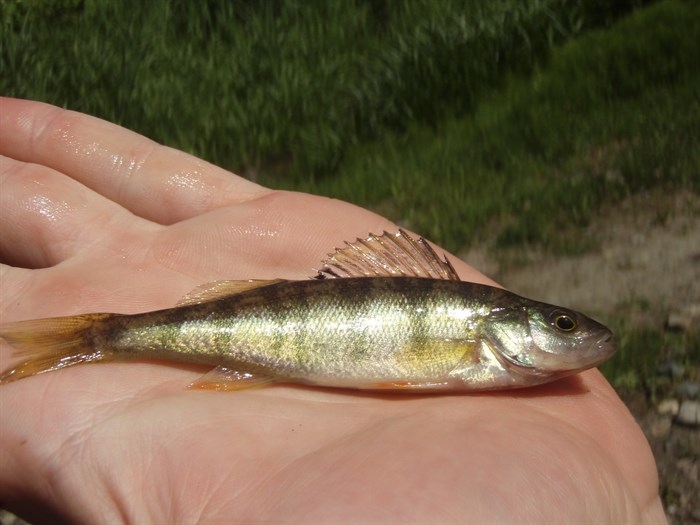
The invasive yellow perch can multiply at an alarming rate, overpowering and out-competing other species for food.
Image Credit: Province of BC Flikr
July 13, 2016 - 6:30 PM
OKANAGAN - Two lakes in the Central Okanagan are being closed for fishing so the provincial government can put a chemical into the water that kills gill-breathing fish.
The action is being taken to stop the spread of invasive yellow perch in Windy Lake and Little Windy Lake in the Kelowna area. The lakes are part of the Nicola River system.
A spokesperson for the Ministry of Lands and Natural Resource Operations says the province was notified by a fisherman in May 2016 that perch had been caught in Windy Lake in the summer of 2015. It’s believed someone released them into the lake attempting to create a local perch fishery.
Yellow perch have few native predators, are adaptive and reproduce quickly. They can rapidly overpower native species for habitat and food, the ministry says.
So far, fishery staff believe the perch population hasn’t fully established in Windy Lake, and no perch have been seen or caught in Little Windy Lake. To control the population and prevent them from spreading, the province plans to apply a treatment of rotenone, a biodegradable, naturally occurring compound that kills gill-breathing fish by suffocating them, in the fall of 2017.
In advance of the organized treatment of rotenone, the province closed the lakes to fishing as of July 9, 2016.
“Only by closing the lakes to angling, can staff control the spread of yellow perch by removing source population,” a ministry spokesperson said.
The province has treated 11 other water bodies in the Thompson drainage system using similar methods. Rotenone was used in 2009 to eradicate invasive fish from Gardom Lake in the North Okanagan.
Because the chemical will also kill rainbow trout, the province plans to restock the lakes following the treatment.
Ministry biologists say there may also be some impacts to aquatic invertebrates.
"However, monitoring of previous treatments shows that invertebrates quickly rebound to pre-treatment levels," the ministry says.
According to the ministry, low concentrations of rotenone used for lake rehabilitation are only effective on organisms with gills and are not harmful to human health. The Windy Lake rehabilitation project is being done in partnership with Interior Health and Health Canada.
The lake and campsite will be closed for a short period of time during and after treatment, which will only take a few hours, and fishing closure and educational signs are already up at the lake to help ensure the public is aware.
Once the lake is treated, the majority of fish will be left to naturally decompose to help restore important nutrients to the ecosystem.
"There will be no impacts to any wildlife that may feed on dead fish because any small amount of rotenone consumed will be broken down quickly by enzymes in the digestive system," the ministry says.

A map of the closure area of Windy and Little Windy Lakes.
Image Credit: Government of B.C.
To contact a reporter for this story, email Charlotte Helston or call 250-309-5230 or email the editor. You can also submit photos, videos or news tips to the newsroom and be entered to win a monthly prize draw.
We welcome your comments and opinions on our stories but play nice. We won't censor or delete comments unless they contain off-topic statements or links, unnecessary vulgarity, false facts, spam or obviously fake profiles. If you have any concerns about what you see in comments, email the editor in the link above.
News from © iNFOnews, 2016